Sunday mid-day gets batting legend Sunil Gavaskar to take guard for a flurry of nostalgic strokes of his childhood, club cricket, as well as the tough world of inter-office and domestic cricket, all of which contributed to the rich tapestry of Mumbai cricket
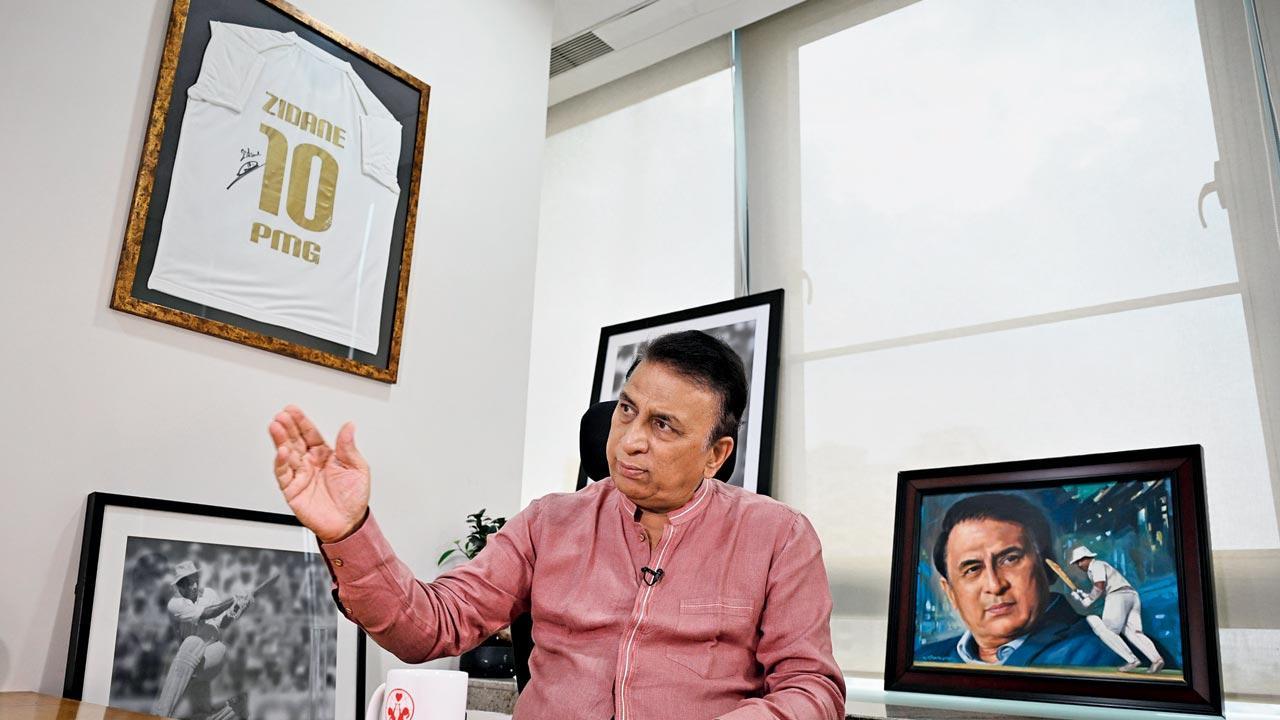
Batting legend Sunil Gavaskar turns back the clock at his Professional Management Group office at Dadar West on May 27, on the eve of his departure for the T20 World Cup’s America leg. Pic/Rane Ashish
Sunil Gavaskar has checked into his Shivaji Park office a few hours after landing from Chennai, where he did commentary in the May 26 Indian Premier League final.
ADVERTISEMENT
He doesn’t appear fatigued, but is hungry. His humility comes shining through when he asks us if he can have a bite. Food is ordered for us too along with tea/coffee.
While the cricket great gets ready to be interviewed for his 75th birthday, this writer can’t help thinking about the earlier interactions with mid-day which coincided with his birthdays.
In 2004, just before he turned 55, he told us how actor Dev Anand, who was then 80, is an example of how, “to feel young and get on with the best things in life.”
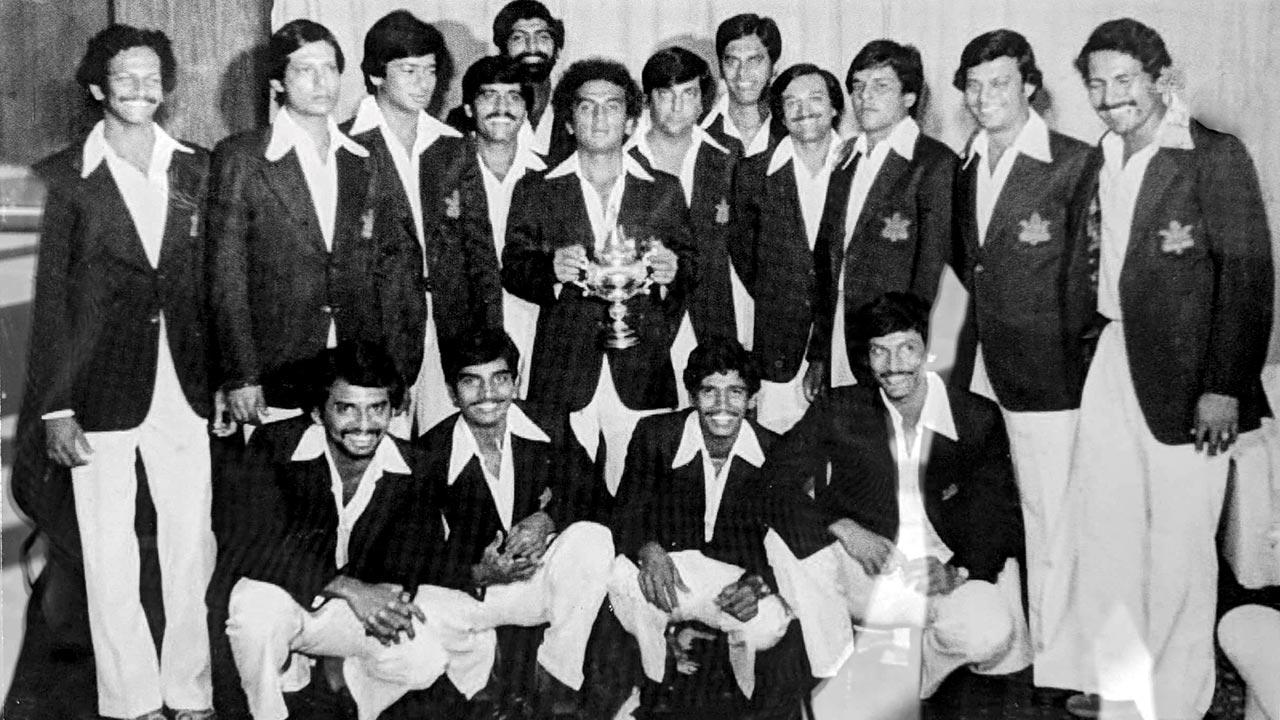 This photograph of the Sunil Gavaskar-led Nirlon team which won the Moin-Ud-Dowlah Gold Cup in 1980 at Hyderabad adorns a wall at the Nirlon Knowledge Park in Goregaon East. Pic/Clayton Murzello
This photograph of the Sunil Gavaskar-led Nirlon team which won the Moin-Ud-Dowlah Gold Cup in 1980 at Hyderabad adorns a wall at the Nirlon Knowledge Park in Goregaon East. Pic/Clayton Murzello
Before Gavaskar turned 60 in 2009, he told us how he still loves dropping tea on four Parle-G biscuits before consuming them as an evening snack.
In this interview, he talks about his journey in Mumbai cricket. It’s a subject close to his heart and one could get an idea of the kind of joy he got and continues to get from being part of the Mumbai cricket culture.
Edited excerpts from a video interview for Mid-day’s Mumbai Cricket Podcast.
Going back 75 years. Your mother is carrying you and gets admitted to the Dr Purandare Hospital [Girgaum Chowpatty]. Now, you pass Purandare very often while going for commentary. Do you stop and look at it?
I certainly have a look at it when I go past, but being a hospital, you don’t want to go there because you will naturally interfere with what is happening over there. But it is a pretty happy memory every time I go past, on the way to the [Wankhede] stadium or that side of town.
Purandare Hospital throws up another bit of trivia, because Aunshuman Gaekwad was born there a few years later…
Oh nice! I didn’t know that. Anshuman’s birthday coincides with my wedding anniversary, but I didn’t know that he
was also born at that hospital. Great, fantastic!
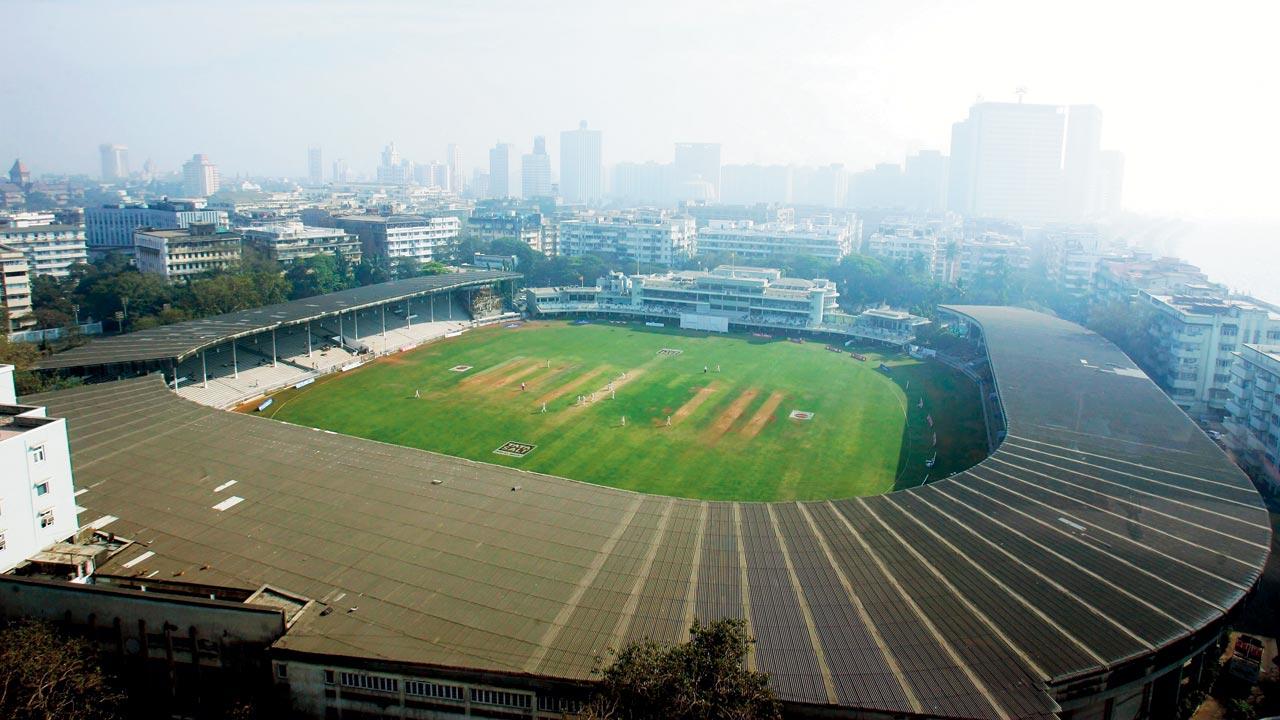 A general view of the Brabourne Stadium during Day Two of the three-day game between CCI Xl and England on February 19, 2006. It was here where Sunil Gavaskar watched his first Test match way back in 1958. Pic/Getty Images
A general view of the Brabourne Stadium during Day Two of the three-day game between CCI Xl and England on February 19, 2006. It was here where Sunil Gavaskar watched his first Test match way back in 1958. Pic/Getty Images
For cricket lovers and Gavaskar fans, Chowpatty is associated with their hero whereas for the others, the place is associated with bhel puri. Isn’t that a
good coincidence?
It is. I remember going on to the sands and having bhel puri, dahi batata puri. That has always been my favourite, occasionally pani puri, too, and all the rubbish that youngsters eat. I stayed in the lane opposite Bhatia Hospital [Tardeo], so a lot of us would just walk across. It would be maybe a 15-20-minute walk from where we were, to Chowpatty beach. We just ran around the beach and played around. It was fun.
What did you learn from your mum?
The first thing I learned from her was that if you want to play cricket, you should be able to bear pain. I must have been four or five years old, and you know kids have this plastic bat. She was playing with a rubber ball and I smashed it back. It hit her on the nose and she started bleeding. I was worried. The distance would have been less than 10 yards—we had a small balcony. I ran to her and she put her pallu on the bleeding [part], tapped it and said, ‘Go, if you want to play cricket… if you want to be a cricketer, you must be able to bear the pain. That stayed in my mind because you play cricket with a hard ball, and you will get injured not necessarily while batting, but fielding also. You must be able to bear the pain and carry on unless it’s a broken bone or whatever. You got to grit your teeth and carry on. That was my first lesson.
They say cricket reflects life and vice versa. Do you think this is a good example of that?
Certainly, in my case. I cannot generalise. But it certainly was something that told me that not just for cricket, but in life too there will be ups and downs and you should be able to take the rough with the smooth. You’ve got to be able to pick yourself up when you are down and maybe take a couple of deep breaths to stand up again. Those are the kind of things that little episode taught me.
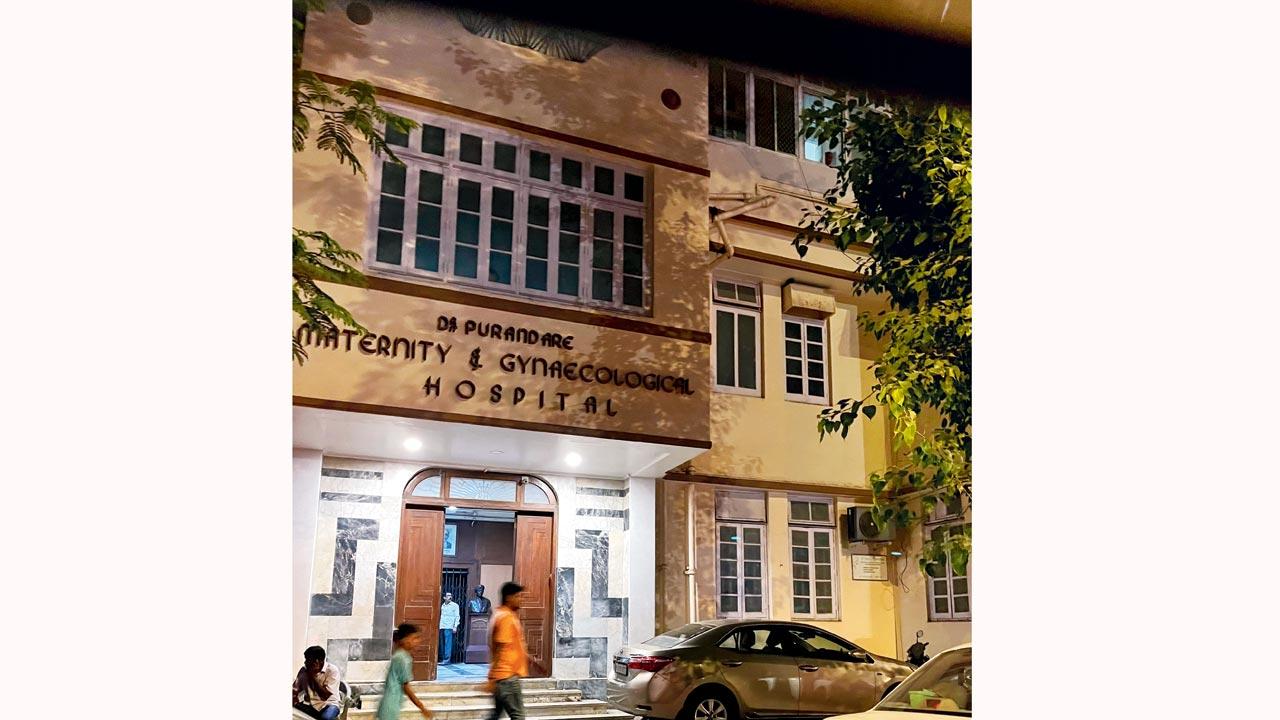
The Dr Purandare Hospital, Marine Drive, where India captain-turned-television commentator Sunil Gavaskar was born on July 10, 1949. Pic/Clayton Murzello
Do you think the first signs of competitiveness emerged when you played with your friends [in Chikalwadi]?
Definitely.
And you hated getting out…
Definitely, because you wanted to bat as much as you could. The other guys were trying to get you out. So you wanted to be on top of it.
Did the parents in the area get kicked by these little games?
They would watch, not all of them, but a lot of them would come on to the balconies and watch what was happening. They didn’t interfere. I do not recall even a single instance of the parents saying to the boys, ‘Come on, let’s go in and start studying.’ That was just incredible. Even more incredible was the fact that we often broke the windows of the ground floor flats.
But apart from the fact that there would be a concerned question like, ‘Hey, what happened’—the shock that your glass is broken, none of those families ever told us to stop playing cricket. And so, it was just a lovely atmosphere. We had Bengalis, Gujaratis, Maharashtrians. It was a melting pot, it was fantastic. You have been to one of my get-togethers where a couple of boys still come. The memories are truly special.
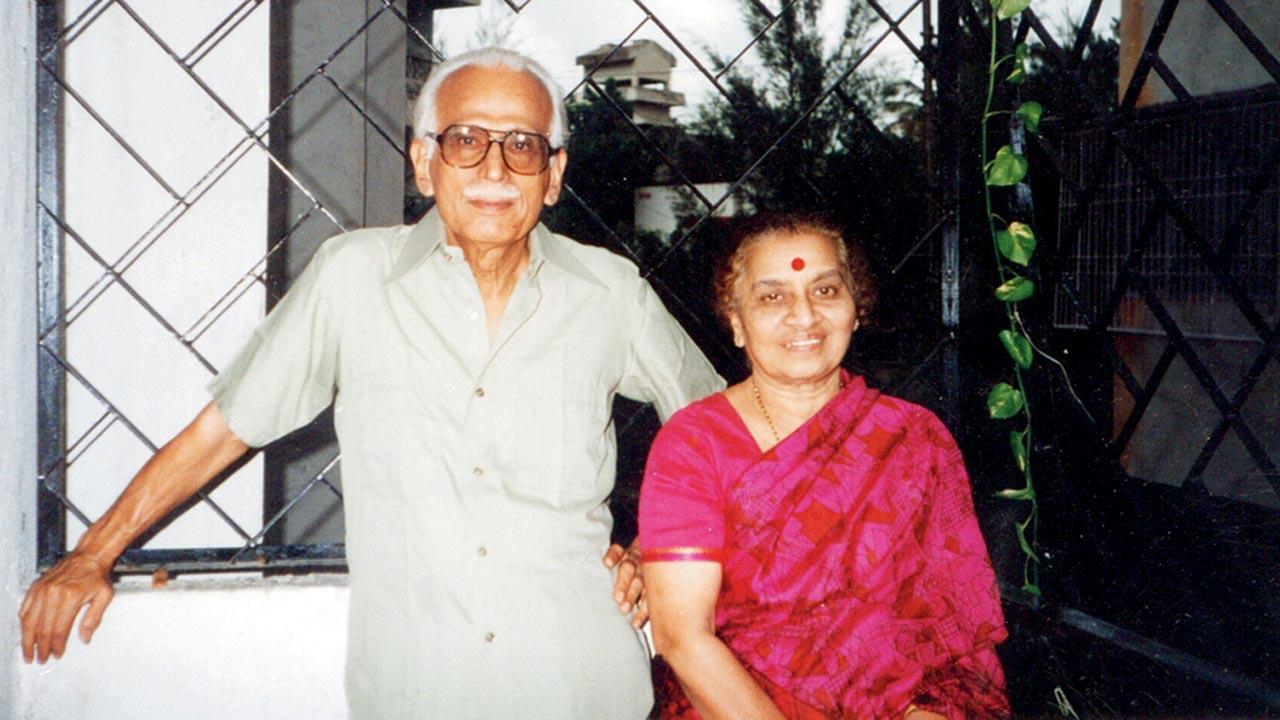 The all-time great’s parents, Manohar and Meenal Gavaskar Pic/mid day archives
The all-time great’s parents, Manohar and Meenal Gavaskar Pic/mid day archives
It was during your school days that you watched your first Test match at Brabourne Stadium…
Yes, 1958, when the West Indies team came down. I was there when Ghulam Guard [India pacer] knocked the bat out of Garry Sobers’s hand and he got a caught and bowled. I was sitting in the North Stand. In the second innings, Ghulam Guard bowled him a bouncer and Garry hit him into the car park near the CCI tennis courts. It was almost like [saying], ‘bowl me a bouncer again and we will see.’
When did you watch your next Test match?
India v Pakistan in 1960. I was in Bombay Gymkhana Stand this time. I saw Hanif Mohammad getting run out. I was very excited because he was an opening bat. I was beginning to open the batting, so I wanted to see Hanif saab. He was batting 128 overnight. I saw Vijay Manjrekar throw flat from where the tennis court is, into the wicketkeeper’s gloves and Hanif Mohammad was run out for 160.
Milind Rege says it was he who made you an opening batsman by forcing you to open in a schools game.
Yes, I think in my first school game, I batted No. 10 and Milind batted No.11. That’s the first time my name came in the papers. In those days, school cricket was covered very well and so I got up just to read my name in the papers. You knew if you scored above 25, your name would appear in the papers. I got up in the morning to see and the name appeared as G Sunil 30 not out.
When it came to the Giles Shield, I was asked to open the batting and that’s how it started.

Gavaskar in a reflective mood during the interview. Pic/Rane Ashish
When did you feel comfortable opening the innings?
From the first time. It was like playing tennis-ball cricket. You wanted to be first up. You didn’t want to wait for your turn to bat, because you want to bat as much as possible before the light faded.
How did the offer come to play for Dadar Union?
I had a good season for Indian Schools [1965-66] and that’s where the offer came to play for Dadar Union. I didn’t get an immediate place in the XI.
I had to do my apprenticeship by watching everybody, learning about how to be a part of the team environment, make sure that when the team came back to have some water ready. In those days, there wasn’t a situation where you had drinks, juices and colas. And you also did scoring, that was part of the
learning curve.
Who was your first club captain—Madhav Mantri or Vasoo Paranjape?
Vasoo Paranjape. Madhav Mantri was still around, he was a senior member. He was like the chairman of the club so he would come for every match. There was no
tomfoolery when he was there.
On the other side, it was motivation because if he watched you closely, you would benefit…
I am not too sure about the benefit aspect because he never wanted a finger to be pointed at him. In fact, I suffered a bit because of the fact that he was a disciplinarian and he might have upset a few people who were then from Shivaji Park [Gymkhana] or some other clubs. I mean, [when] I got picked for Mumbai, I had a bit of a time in the wilderness.
You made your first-class debut for Bombay [in 1967-68] under Manohar Hardikar.
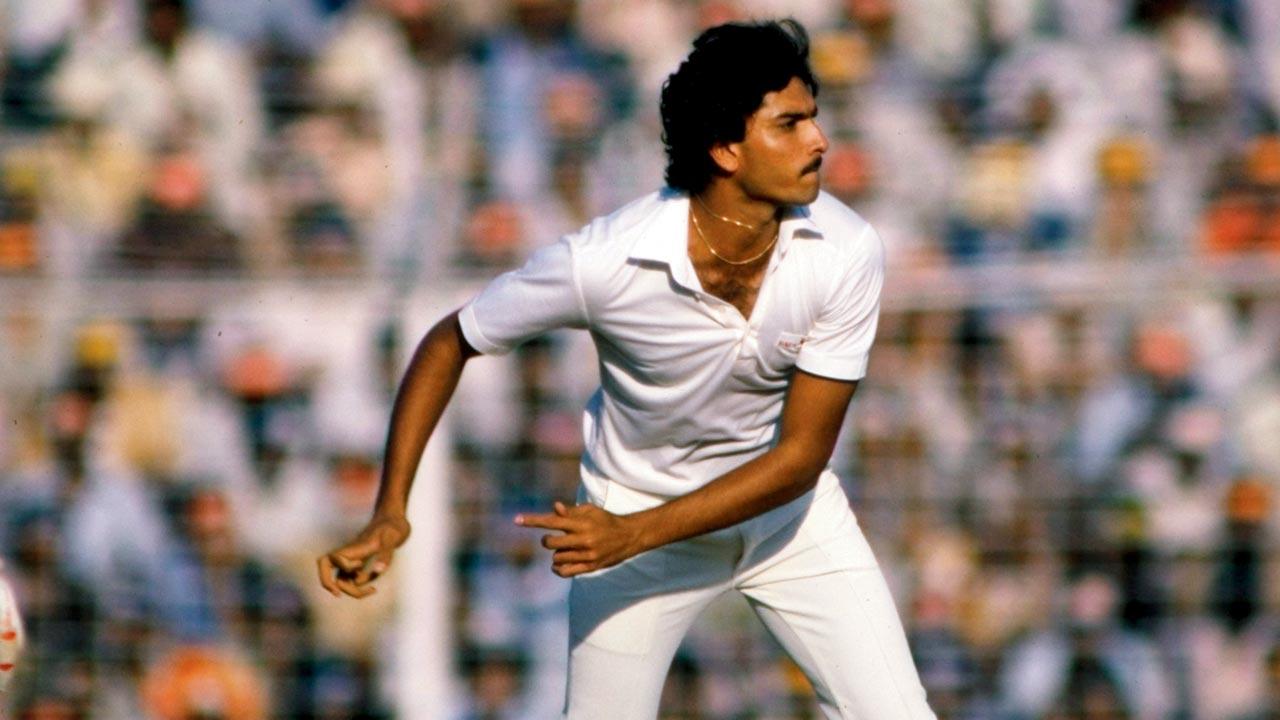 Ravi Shastri, who Sunil Gavaskar first watched at the Nirlon nets before the all-rounder’s 1979-80 Ranji Trophy debut, is seen here bowling for India in the fifth Test against the West Indies at Eden Gardens, Kolkata in 1983. Pic/Getty Images
Ravi Shastri, who Sunil Gavaskar first watched at the Nirlon nets before the all-rounder’s 1979-80 Ranji Trophy debut, is seen here bowling for India in the fifth Test against the West Indies at Eden Gardens, Kolkata in 1983. Pic/Getty Images
How was he as a captain?
Very quiet. He spoke to a few people in the change room. He didn’t have much to speak to me. I got the impression that he didn’t think I was good enough to play [in the Mumbai side] which is fair enough at that stage; understandable. On the other hand, all the other Shivaji Park [Gymkhana] players were wonderful — Baloo Gupte, Ramakant Desai, there was Vishoo Bondre, who later on became a colleague at the ACC. All these people were absolutely wonderful. The late Vijay Manjrekar wasn’t playing for Mumbai, but he would come and was always very encouraging. He talked to me about batting, telling me you must carry on and don’t get happy with 150. So, while rivalry was fierce when we [Dadar Union] played against each other, the Shivaji Park [Gymkhana] boys were absolutely wonderful.
Being punctual at Dadar Union was a big factor. Were you ever on the wrong side of the clock?
Never. I don’t recall ever being on the wrong side of the clock except I think when I had arrived in the morning from England and then had to go the venue. But I was there before the first ball was bowled—15-20 minutes before the game started.
At the Associated Cement Companies (ACC) office, you were working with people who were not connected to cricket. How was that?
To start with, a little bit difficult because everybody looks at you with a different sort of perspective. Lots of people over there had been working for a lot of years and were still in a clerical position. And suddenly, they see you, a new guy in the officer grade. I never experienced anything else than maybe [they being] reserved. I did a fair bit of work. I was with the staff department. I used to do gratuities and stuff like that. I did a training period for about six to eight months, not at a stretch, but went to factories to see how cement was made, distributed, etc. I joined ACC after I came back from the West Indies [1971] in April and in May, I was working for ACC.
The Dadar Union team did not know what it was to lose…
Yes. We had an outstanding team at Dadar Union—Vasoo Paranjape, the captain, VS Patil, the senior member. In the short time [after I joined] we had Narayan Pai who was sharp and liked to bowl the bouncer. We also had PK ‘Joe’ Kamath, Ramnath Parkar, Suresh Tigdi, Urmi Mody, Avi Karnik—a top-class team, wonderful team.
Any particular Kanga League innings which gave you a lot of satisfaction?
I think it was for Rajasthan Sports Club in the B Division at the Islam Gymkhana. It was on my birthday—one of those rare occasions where I played a game of cricket on my birthday and I got a 100. So, that was a great feeling. I think that was the reason I was asked by Dadar Union to come and play.
That must have been a proper Kanga track…
Yes. But the outfield was a lot better than Azad Maidan and Cross Maidan. If you hit, you did score some runs unlike Azad and Cross Maidan, where the ball just got stuck in the big tall grass and didn’t go anywhere.
What made you move from ACC to Nirlon?
At ACC, I thought they were not having new players coming in. The senior players had all retired from first-class cricket. So, they focused more on their careers in the office while at Nirlon, the opportunity was to build a young team. My own ambitions and aspirations along with theirs was to go on and play as much better cricket as possible. So, when the late Mr Virenchee Sagar approached me and said look, we are going to do this, I accepted it. We had a good team. [Late] Hemant Waingankar put it all together. He is like my younger brother, so he was the man in charge of getting everybody. He got Sandeep Patil, Ravi Shastri, Suru Nayak, Rahul Mankad, there were so many players—Vijay Mohan Raj, Suresh Shastri, Suresh Shetty—all these guys. We were a very good team, a young team, all playing Ranji Trophy for different states.
In fact, there were only one or two players who were in the team who did not play first-class cricket…
Yes. There was also Sanjay Jaywant, Avadhoot Zarapkar, Avi Karnik. We started to win a lot of titles. We won the Moin-Ud-Dowlah Gold Cup [in Hyderabad] in 1980, we won the Buchi Babu in Chennai which I thought was a great lung opener for the season because we got good pitches. It wouldn’t rain there and we would get some great pitches.
You mentioned in One Day Wonders [book on the 1985 World Championship of Cricket] that there are two occasions you wouldn’t walk—against Mafatlal and Pakistan. Why is that? Were you given out wrongly many times?
[Smiles] Well, ‘many’ times is not the right word, but the odd time and that is part of the game. But what we used to see at the end of the day’s play was the umpire sitting with the Mafatlal manager. It was office cricket, but serious cricket. It was like a mini first-class game with so many first-class players involved in both the teams. Out of 22 players, you would expect maybe 20 players to be first-class players. It was serious stuff and we wanted to win the Times Shield. Always the decisions, the marginal ones, always went in Mafatlal’s favour. And that was obviously because of the fact that the manager would be sitting with the umpires in the evening and maybe dropping them [home]. Those days, umpires used to take local trains and buses to go home. We all thought that was the reason why the marginal decisions went in their favour and never in ours.
That’s the time I said half in jest of course, that I won’t walk against these two teams.
Mumbai’s 1976-77 Ranji Trophy triumph over Delhi… how special was that?
It was special. When we started and right till the time I finished playing cricket, the main thing was to beat Maharashtra. The Mumbai versus Delhi rivalry people talk about was not Mumbai versus Delhi. It was always Mumbai versus Maharashtra.Then, in the early 1970s, some of the things that had happened between some of the North players and West players particularly the way Ajit Wadekar was treated made us all want to win very much against Delhi. Our rivalry was not so much against Delhi. But we wanted to pull out something special because we had heard about how the Delhi brag-adier [who said] ‘we are going to do this and that.’
You were smiling at the end of the game, but you were dismissed by Bishan Singh Bedi for a low score in both innings. How difficult was it?
Not difficult, because I was beaten by a beautifully tossed up delivery, I went down the pitch [in the second innings]. Every time the ball was tossed up, I used to go down the pitch. The loop was such that he beat me in the flight, in the air and the ball spun enough to leave me stranded. There was nothing to feel [bad about] when you are defeated by a champion bowler. I was caught and bowled in the first innings. Again, why was he such a great bowler, the best left- hander I have seen? Because he had the great ability to look as though every ball was the same. It wasn’t. To get beaten by a great bowler and be out to him was nothing to get upset about.
You just doff your hat to the fact that he has beaten you and he’s got you out.
The two occasions where after that Delhi prevented Mumbai from proceeding—in 1978-79 and 1979-80 and then Bombay beat Delhi in 1980-81 when you were with the Indian team in Australia and New Zealand. Did you follow that season when Mumbai beat them?
Follow? Even now I follow Mumbai’s fortunes. I was part of the team then, so I was following it 100 per cent. I didn’t have the same kind of ready access as there is now but yes, absolutely, totally following it. Even today, I am in touch with Milind [Rege], asking what is happening here and how many points for Mumbai if I am out of India. Fortunately now, websites have the scores.
So, Ranji Trophy triumph No. 42 must have delighted you and you watched some of the action…
I was not there on all days, but to see them get the trophy back was a wonderful feeling because they have been there, they have not been there, then they had not qualified once for the Playoffs. That was a little hard to accept.
I totally understand the fact that standards all over the country have risen and with the IPL, there is so much more talent coming in from the interiors, if one might call it that. Some very good talent coming through. So, it is understandable that Mumbai is not going to dominate [like they did] from, say, 1958 to 1974.
That 1984-85 final in which Ravi Shastri got eight wickets in. You were not present on the last day, but you had a party for the team…
Yes, I wasn’t well. I had fever. I was in the change room—on the masseur’s table, getting information as to what was happening.
It was quite unbelievable…
Yes, it was one of the better Mumbai wins. Some were easy wins, but this was a real hard-fought win. This was a win where Mumbai showed its character if one might use that word—never-say-die, khadoos—‘whatever happens I am not going to give my wicket away’—that kind of attitude.
The bowling hero was Ravi Shastri and team were led by Sandeep Patil on the last day…
Yes.
Talking about Ravi Shastri, you called him to the Nirlon nets to see him bowl before his Mumbai debut in 1980. Do you remember much of that?
Yes, I do. This was at CCI. I stood up over the partition and watched him. I didn’t want to go out and stand behind the net or be around the net because sometimes some players can get nervous. He was very impressive. He probably grew another inch or two after that. As he grew taller, the loop maybe came down a little bit. But he had a lovely loop, getting the ball to drop and turn. He was a very determined batter too. That said, I have got to confess it was Pradeep Vijayakar [journalist] who in the 1981-82 series against England, came to me at Mumbai and said, ‘You must promote Ravi up the order because he is a very good batter.’ I think Ravi went up a couple of notches the order.
 Subscribe today by clicking the link and stay updated with the latest news!" Click here!
Subscribe today by clicking the link and stay updated with the latest news!" Click here!







